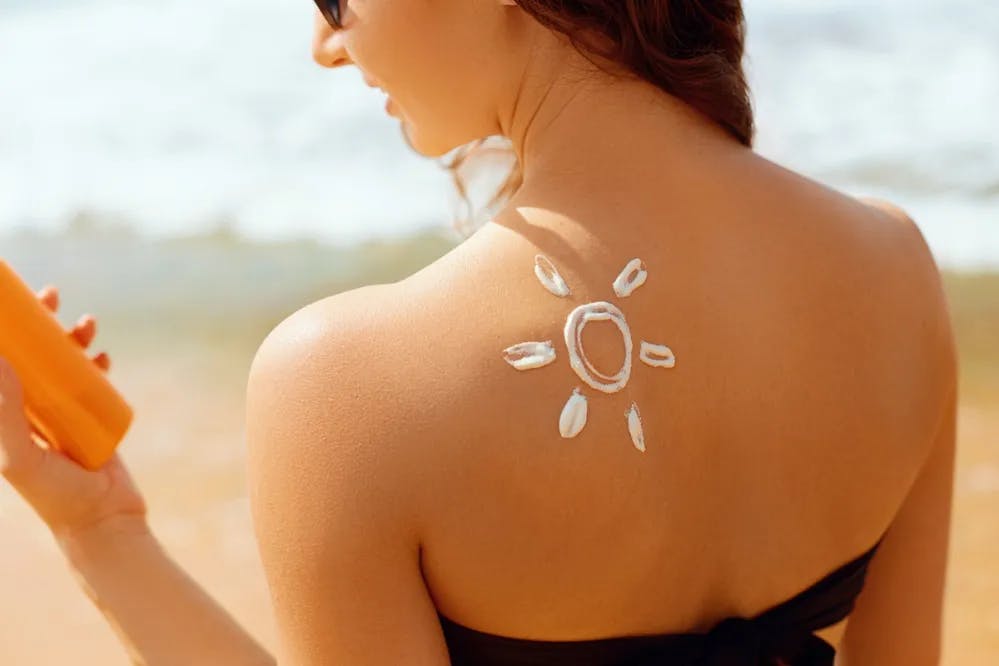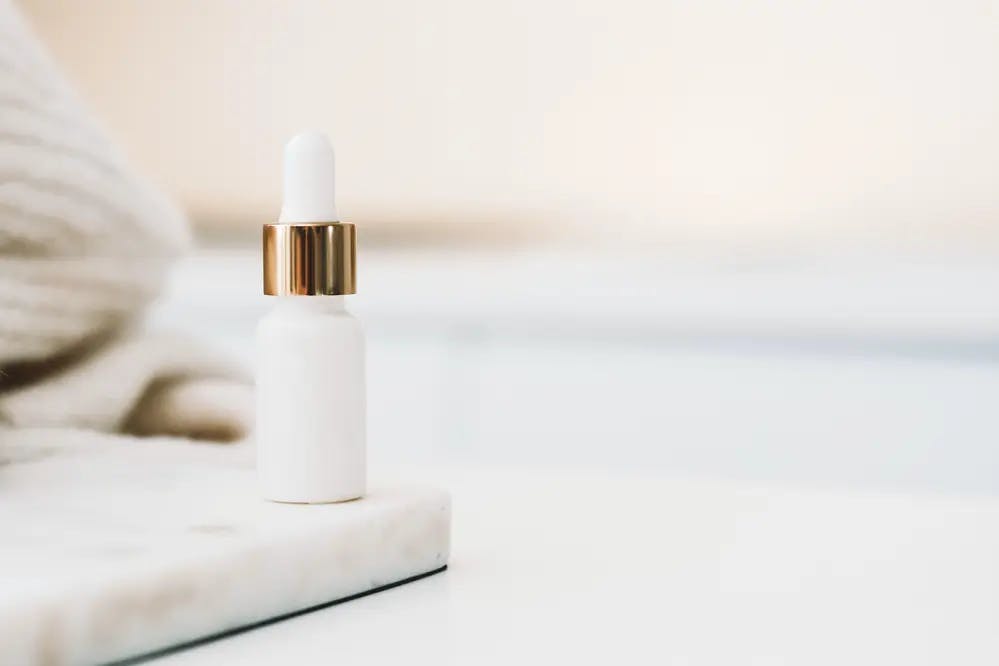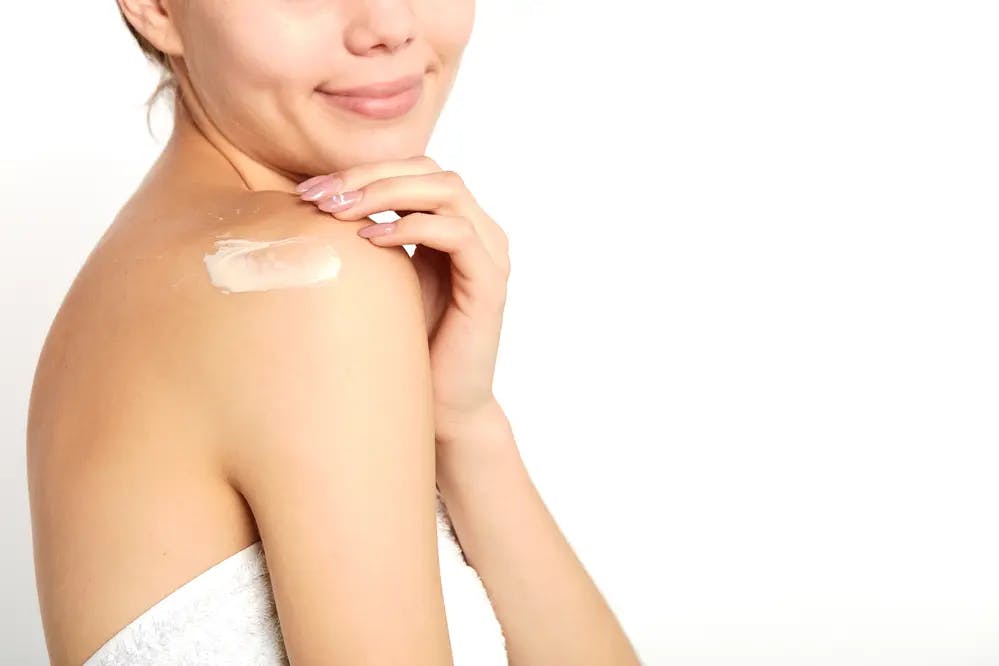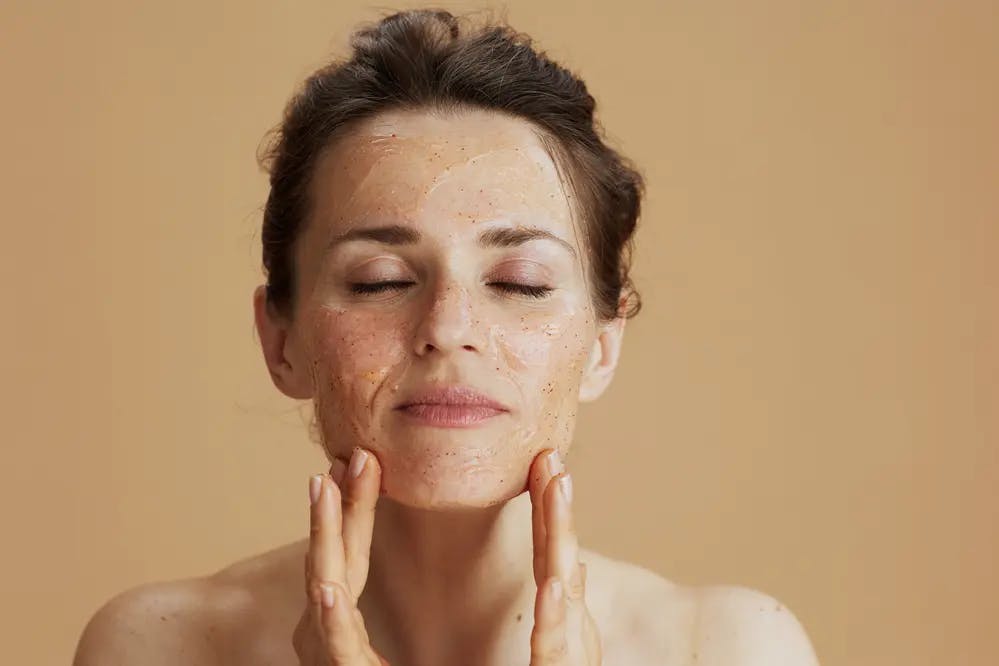Smile and Laugh Lines: Causes, Symptoms, and Treatments

Table of Contents:
- What Are Smile Lines?
- The Main Causes of Nasolabial Folds (And How to Reduce The Risk)
- How Can I Reduce My Risk of Nasolabial Folds?
- Common treatments for smile lines
- How To Naturally Get Rid of Smile Lines
- Conclusion
Smile lines (or their less cheerful name, ‘nasolabial folds’) are the lines or wrinkles that run from the sides of your nose to the corners of your mouth.
Although these optimistic lines are the product of smiling, laughing, and talking (and thus a natural part of the aging process), you won't get rid of the good memories if you decide to improve their appearance! In fact, there are several OTC products and treatments you can try if you want to change the way these smile and laugh wrinkles look. Let us show you the best ones.
What Are Smile Lines?
Smile or laugh lines are fine creases that appear around the mouth. They start from the nasal cavity base and may go down to the chin. These lines, also known as “nasolabial folds”, marionette lines, or frown lines, are normal signs of aging and tired facial muscles.1,2
Smile lines are very common, as they are usually the result of repetitive facial expressions like laughing and talking. As you get older, these lines just deepen or multiply, but there are many things you can do to minimize this process.
From OTC creams containing retinol, Vitamin C, and peptides to dermal fillers, botox, and cosmetic surgery, there are many options to get your skin to look tighter and smoother.
The Main Causes of Nasolabial Folds (And How to Reduce The Risk)
So, what causes these wrinkles around your mouth? The primary cause behind the appearance of laugh lines is a loss of elasticity.
Collagen and elastin are the two main components responsible for the smoothness, freshness, and tightening of the facial muscles. They provide resilience and stretchiness to the skin and hold it in its natural original shape. Physical damage or degradation of these two components can cause aging of the tissues.3,4
There are several factors that can be involved in damaging collagen and elastin. For instance, UV radiation can oxidize the skin tissues, triggering unwanted side reactions and generating highly reactive oxygen-centered free radicals (such as hydroxyl radicals). These free radicals can then degrade the proteins, oxidize lipids and affect collagen and elastin.
So, photodamage is one of the crucial players in aging, leading to smile and laugh lines. Smoking also follows the same mechanism with accelerated collagen and elastin damage. So, to sum it up, the main causes of smile lines or nasolabial folds are:
- Sun damage: Exposure to the sun leads to lessened production of collagen and hyaluronic acid, two components responsible for keeping our skin hydrated.
- Aging: As we get older and we do repetitive muscle movements, our body doesn’t produce as much collagen, and our skin loses elasticity - forming wrinkles and lines around our eyes, nose, and mouth.
- Smoking: Smoking contributes to wrinkles around the mouth, too, because it can lead to the increased production of an enzyme that breaks down collagen. This is why smokers tend to have characteristic patterns of wrinkling around the mouth and eyes.
- Weight loss or gain: If you lose or gain weight rapidly, you might notice more smile lines due to the skin on your face and neck becoming more lax. This can, in turn, make your wrinkles appear more pronounced.
How Can I Reduce My Risk of Nasolabial Folds?
You can take several steps to reduce your risk of developing smile lines or at least minimize their appearance considerably.
One of the most important things you can do is always protect your skin from the sun. As we covered above, exposure to its harmful UV rays can cause damage to your skin and lead to premature aging and wrinkles. So, if you want it to remain safe, always wear sunscreen and protective clothing.
Another important factor is to keep hydrated. Dehydrated skin is more prone to wrinkles and sagging, so make sure you drink plenty of water regularly. A consistent skincare routine can also help keep your skin healthy, especially if you use gentle cleansers, moisturizers, and serums formulated for your skin type.
Using products containing Vitamin A (or retinoids) can also have preventative effects, as they promote the production of collagen and can improve your skin’s elasticity.
Lastly, get enough sleep! Lack of sleep can affect your skin’s health, too, leading to fine lines and wrinkles. Aim for eight hours of sound sleep each night.
Common treatments for smile lines
Various topical treatments can also improve skin conditions and control the appearance of smile lines and wrinkles.
For example, moisturizing agents, niacinamide, and retinoids can control collagen damage, while surgical treatments, micro-needling, toxin injections, and dermal fillers are also sought to address the smile line problem. Let’s go through each of these treatments in some more detail, shall we?
- Botulinum toxin injections: Botox is a toxin that, when injected, can tighten muscles and minimize their movement. This makes wrinkles or fine lines appear smooth and not show significantly (or in other words, disappear). Although you will see some effects within a few days of the first injection, keep in mind that Botox won’t work as well for the lines around the sides of the mouth.
- Dermal fillers: These injectable fillers (which add volume to areas of your face) are made from hyaluronic acid. When placed at the creases that go from your nose to your mouth, they can have noticeable effects right away. The results typically last several months, although you need to be careful not to repeat the injections too much as they can leave scar tissue.
- Skin-tightening procedures: These treatments involve lasers, ultrasound, or radio waves and can stimulate your skin’s production of collagen and reshape the skin and underlying tissues. For example, laser treatment is a type of resurfacing technique that decreases skin spots and wrinkles by removing the top layer of skin cells. Another popular therapy is micro-needling, which uses a small roller to promote the production of natural collagen.
- Surgery: if you want your results to last longer, you can get a facelift or rhytidectomy. This is a more permanent solution that can address the lines around your mouth and your eyes in the same single procedure.
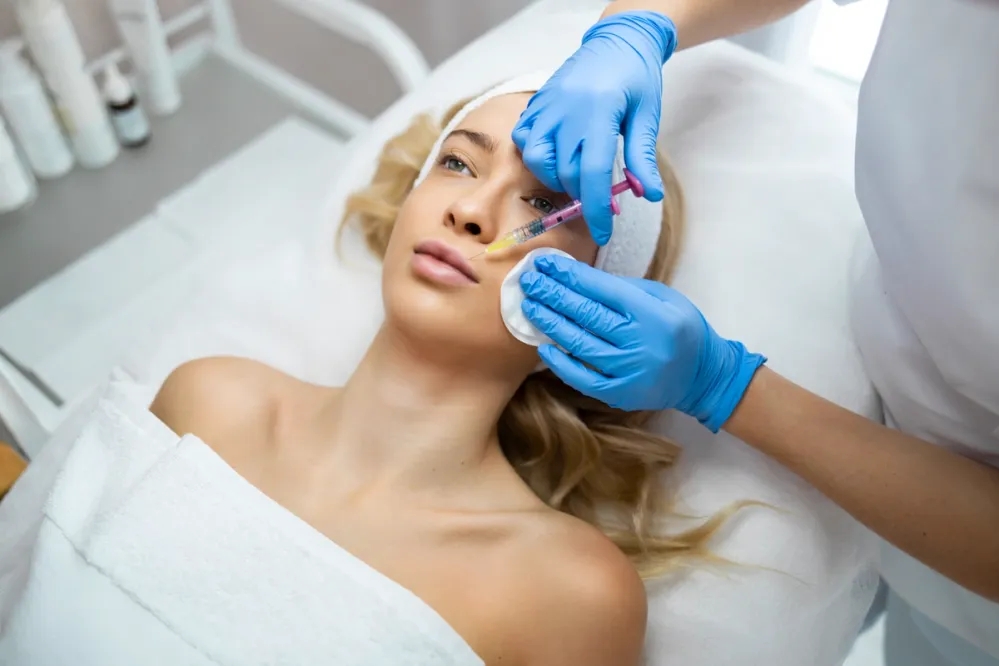
How To Naturally Get Rid of Smile Lines
The best way to care for your skin at home is to adopt a good skincare routine.
The regular and consistent use of retinoids, for example, can help improve the levels of collagen on your skin, giving it a smoother appearance. Retinol is available as part of many OTC creams and has consistently shown significant results with fine lines and wrinkles.5
Other substances used to treat smile lines at home include Vitamin C, peptides, and hydroxy acids. There are also some light kits available that use LED lights to increase collagen around your nose and mouth area.
Here are some suggestions to adopt a top-notch routine and deal with those pesky smile lines:
Paula’s Choice 1% Retinol Treatment
The Paula's Choice Retinol Serum is a potent anti-aging treatment that can benefit those with smile lines. This serum contains a blend of 1% retinol, vitamin C, peptides, and antioxidants that work together to stimulate collagen production, improve skin texture and tone, and reduce the appearance of fine lines and wrinkles, including smile lines.
Natrium’s Retinal Serum is a powerful anti-aging treatment that can help reduce the appearance of smile lines. This serum contains a high concentration of retinaldehyde, a gentler, but more potent form of retinoic acid, which can stimulate collagen production and improve skin texture and tone.
Good Molecules Retinol Cream is a very affordable nourishing, anti-aging treatment as it contains a blend of retinol, hyaluronic acid, and squalane that work together to stimulate collagen production, improve skin texture and tone, and reduce the appearance of fine lines and wrinkles. Be sure to give this a try if this is your first time using retinol!
Whichever retinol treatment you choose to use, be sure to apply a pea size amount at night before applying your moisturizer of choice and follow up with sun protection in the morning.
Conclusion
While smile lines or nasolabial folds are a natural part of the aging process, there are several things you can do to both reduce the risk of developing them or minimize the appearance of the wrinkles.
We’ve covered the causes of laugh lines and some of the most popular treatments. Do you have a skincare routine that has worked for you? Share it with others! Join us!
References
- Khavkin, J.; Ellis, D. A., Aging skin: histology, physiology, and pathology. Facial Plastic Surgery Clinics 2011, 19 (2), 229-234
- Wenk, J.; Brenneisen, P.; Meewes, C.; Wlaschek, M.; Peters, T.; Blaudschun, R.; Ma, W.; Kuhr, L.; Schneider, L.; Scharffetter-Kochanek, K., UV-induced oxidative stress and photoaging. Current Problems in Dermatology 2001, 29, 83-94.
- Bentley, J. P., Aging of Collagen. J. Invest. Dermatol. 1979, 73 (1), 80-83.
- Kammeyer, A.; Luiten, R., Oxidation events and skin aging. Aging research reviews 2015, 21, 16-29.
- Darlenski, R.; Surber, C.; Fluhr, J., Topical retinoids in the management of photodamaged skin: from theory to evidence‐based practical approach. British Journal of Dermatology 2010, 163 (6), 1157-1165.
